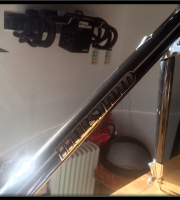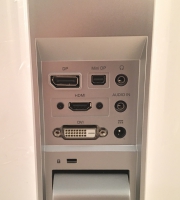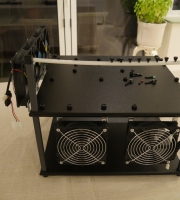


Amidst the hype, drama and fallout of the most publicised cyber showdown since the day Darth Vader gate-crashed Megaton’s Private pool party, the skilful scheming of another equally formidable force silently eluded our senses.
Few would relish the chance to trade teraflops with giant green eyes, or rile Red Beard’s rabid ROPs and yet, whilst this particular sage of semiconductor sorcery could scarcely claim to have paralleled the his foes’ polygonal prowess, the artistic attributes of Intel’s post Haswellian architecture revealed enough sky blue to paint lake superior with a broad brush and a healthy glow.
Of what do we so cryptically speak? Why, a tick-tock fleeter than that of the Falcon’s Fitbit, which of course can’t tick or tock for toffee because it has no moving parts. How about a Gazell’s Garmin? No? An antelope’s Apple Watch? A racing pigeon’s Pebble? Curses, not a cog, pendulum or second hand in earshot. And all I desired was to quaintly inform jaded jargon junkies that yet another glittering gamut of solder and circuitry stood poised cripple their credit ratings.
Got it! A tick tock fleeter than the Road Runner’s Rolex when pursued by Wily Coyote in a propane powered dragster!
Now, let us dispense with laborious linguistics and indulge in a slew of stimulating statistics.
August 2015 witnessed the dawn and noon of Intel’s 14 nanometre era, with the silicone savant’s die shave and swap routine resuming in fine form, and as has been customary since savage sandstorms nullified the Nehalem’s noble reign, it was his heaving hoards of pampered main-streamers whose needs were afforded propriety.
First to materialise was Billy Broadwell, Henry Haswell’s eco-conscious cousin and a chip that trickled onto the mobile market accompanied by such a muted fanfare that many, myself included, had speculated whether its delayed desktop counterparts would ever savour a streak of sunlight or bask in the neon peppered blackness of a gamer’s bespoke pride and joy.
Originally scheduled to escort the Z-97 refresh a year earlier, the Broadwell Brothehood numbered five members, each four cores strong, while hyper threading remained the privilege of its two i7 flagships. Of this quintet, three parts were socket-less BGA affairs and two standard models, branded 5675C and 5775C, were clocked at 3.1 and 3.3ghz by default, with respective “turbo” tempos of 3.6 and 3.7ghz.
The CPUs slotted snugly into the same 1150 pin socket as their 22nm forerunners and cut an attractive package to tardy investors in the Z-97 platform as well as a less extravagant, more overclock-able upgrade to a small portion of existing adopters.
Though unable to displace the infernal Devil’s Canyon, this unheralded processor’s mobile variants commanded comprehensive acclaim from owners of such luxurious portability as MSI’s GT72-Dominator-Pro-G, owing to their leaner power envelope, superior efficiency and ability to maintain their enhanced frequencies with every core fully engaged. In addition, the chip’s “Iris Pro” 6200 hauled integrated graphics technology to unprecedented heights, habitually humbling the efforts of AMD’s fastest APU’s by between 50% and 100% and on occasion, tripling the performance of its elder’s HD 4600.
Curiously, this pictorial party piece handed the Broadwell a recreational advantage over its successor, which emerged from the foundry a mere two months later. However, it wasn’t long before every sagacious source of techno babble was declaring that Intel’s dark, brooding dedication had finally surmounted the challenges posed by this slim and stubborn node and that the spoils afforded by Skylake had far more to do with the copious practicalities of the Z170 chipset than its 91 watt pilot’s modest graphical credentials.
In a bizarre departure from normality, Intel declined to divulge its design’s intricate details at launch, robbing garrulous statisticians of the chance to spend three miles of column inches attempting to explain how and why it was so special, or compose their traditional tributary to teeming transistors. Nevertheless, these all too familiar feats of cubism revealed enough to justify my never revisiting this aggravating article to amend and append.
If the Z-97 had been a bountiful brass band blaring out Brahms’s 5th Hungarian dance, Skylake doubled the tubas, tripled the trumpets and added twenty trombones for a spectacular coda.
The latter is of course a metaphor for the most significant augmentation on a mainstream platform since the introduction of the protocol from which it evolved..